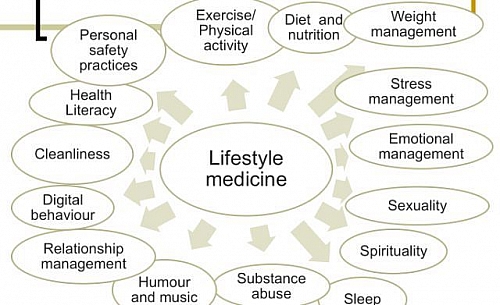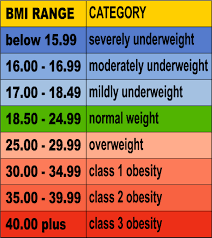
A healthy pregnancy diet can help you and your baby. It can also help you stay fit and reduce the symptoms of morning sickness. Your body needs the right balance of vitamins, nutrients, and protein. You can find these nutrients in fruits, vegetables, and whole grains. Supplements may be required if you don’t eat enough of these food nutrients.
Many fruits and vegetables are rich in fiber which is essential for pregnant ladies. Whole grains are also great sources of fiber. These foods are rich in B vitamins, iron magnesium, potassium, and other nutrients.
A healthy pregnancy is dependent on eating a high-quality protein every day. In your diet, try to include free-range or organic meats. Meats like beef, pork, and lamb are good sources of these essential amino acids.
You should drink at least 6-8 glasses of water each day. This will keep you hydrated without causing constipation. It is better to drink plain, unsweetened water than sugary drinks. Consuming too many of these beverages can lead to blood sugar spikes.

A healthy diet during pregnancy can improve your mood and energy levels. Fresh fruits and vegetables are rich in antioxidants and essential nutrients. The glycemic index of fruits and vegetables is low, which means that they won’t cause a large blood sugar spike.
Getting a good supply of iron is particularly important during pregnancy. Iron is a crucial component in red blood cells, which carry oxygen to all of your cells. Anemia can also develop during the third trimester. Therefore, it is important to ensure you get sufficient iron.
Nuts are an excellent source of healthy fats, vitamins, and minerals. They make a great healthy snack for pregnant women. Nuts are not the only healthy snack option. You can also try seeds, dried fruit, and chocolate chia pudding.
Anaemia and gestational diabetic risk can be reduced by eating a healthy diet throughout pregnancy. While you're in the middle of your pregnancy, it's especially important to eat lots of fruits and vegetables, as they provide you with the right nutrients to support your baby's growth.
Vitamin C is another vital component to a healthy pregnancy diet. Vitamin C improves the body’s ability to absorb iron. It is important to take a prenatal vitamin that contains folic acids every day. Folic acid can help decrease the risk of spina bifida by up to 50%.

You should avoid processed foods when eating a diet during pregnancy. The majority of processed foods contain chemicals and preservatives as well as pesticide residue. The same applies to dairy products. Listeria can be transmitted from mother to baby by unpasteurized dairy products.
You should consume more whole grain when making a meal. A starchy meal can be a great source of fiber. It can give you a feeling of fullness. It is important to eat smaller portions and eat less often in order to keep blood sugar under control.
FAQ
How do I find out what's best for me?
Listening to your body is essential. Your body will tell you how much exercise, nutrition, and sleep you need. Your body will tell you what to do so that you don't go overboard. Pay attention to your body, and ensure that you're taking care of your health.
What is the difference in fat and sugar?
Fat is an energy source that comes directly from food. Sugar is a sweetener found in fruits, vegetables, and other foods. Both fats and sugars provide the same number of calories. However, fats provide more calories than sugars.
Fats are stored in the body and contribute to obesity. They can increase cholesterol levels in the arteries and cause strokes and heart attacks.
Sugars can be quickly absorbed by your body and give you instant energy. This causes blood glucose to rise. High blood glucose levels can pose a danger because they increase the chance of developing type II Diabetes.
How can I reduce my blood pressure
Find out the causes of high blood pressure first. Then you need to take steps to reduce this cause. This could include eating less salt, losing weight if necessary, taking medication, etc.
Exercise is also important. Try walking if you don’t find the time.
If you are unhappy about how much exercise you do, you might consider joining a fitness club. You'll probably want to join a gym where there are other people who share your goals. It's easier to stick to an exercise routine when you know someone else is going to see you at the gym.
Is being cold good for your immune system.
Cold weather can cause a decline in your immune system. Your body makes less white blood cell to fight infection. Being cold can make you feel more comfortable because your brain releases endorphins which help reduce pain.
Statistics
- The Dietary Guidelines for Americans recommend keeping added sugar intake below 10% of your daily calorie intake, while the World Health Organization recommends slashing added sugars to 5% or less of your daily calories for optimal health (59Trusted (healthline.com)
- Extra virgin olive oil may benefit heart health, as people who consume it have a lower risk for dying from heart attacks and strokes according to some evidence (57Trusted Source (healthline.com)
- WHO recommends consuming less than 5% of total energy intake for additional health benefits. (who.int)
- nutrients.[17]X Research sourceWhole grains to try include: 100% whole wheat pasta and bread, brown rice, whole grain oats, farro, millet, quinoa, and barley. (wikihow.com)
External Links
How To
What does the "vitamin") mean?
Vitamins are organic compounds naturally found in food. Vitamins aid us in absorbing nutrients from the food we eat. Vitamins are not made by the body, so they must be obtained through food.
There are two types if vitamins: water soluble, and fat soluble. Water-soluble vitamins dissolve quickly in water. These include vitamin C (thiamine), Vitamin B1 (riboflavin), Vitamin B2 (riboflavin), Vitamin B3 (niacin), Vitamin B6 (pyridoxine), Vitamin C, B1 (thiamine), Vitamin B2 (riboflavin), Vitamin B3 (niacin), and Vitamin B6 (pyridoxine). The liver and fat soluble vitamins are stored in fatty tissue. You can find vitamin D, E K, A and beta carotene as examples.
Vitamins can be classified by their biological activity. There are eight main types of vitamins:
-
A - vital for normal growth and maintaining good health.
-
C - vital for nerve function and energy generation
-
D - necessary for healthy bones and teeth.
-
E - needed for good vision and reproduction.
-
K – Required for healthy muscles & nerves.
-
P - Vital for strong bones and teeth.
-
Q - aids in digestion of iron and iron absorption
-
R is required for the production of red blood cells.
The recommended daily allowance (RDA) of vitamins varies depending on age, gender, and physical condition. The U.S. Food and Drug Administration, (FDA), sets the RDA value.
For example, the RDA for vitamin A is 400 micrograms per dayfor adults 19 years or older. For fetal development, pregnant women require 600 micrograms per daily. Children ages 1-8 require 900 micrograms per day. For infants younger than one year, 700 micrograms are required daily. However, this number drops to 500 micrograms each day for children aged 9-12 months.
Children aged between 1-18 years old who are obese require 800 micrograms per Day, while overweight children need 1000 micrograms every day. Children underweight or obese will require 1200 micrograms a day to meet their nutritional requirements.
Children between 4-8 years of age who have been diagnosed by anemia must consume 2200 micrograms daily of vitamin C.
2000 micrograms is the minimum daily intake for general health in adults older than 50 years. Mothers who are pregnant, nursing, or have a high nutrient need will require 3000 micrograms a day.
Adults over 70 years of age need 1500 micrograms per day since they lose about 10% of their muscle mass each decade.
Women who are pregnant and lactating need more nutrients than the RDA. Pregnant woman need 4000 micrograms daily in pregnancy and 2500 per day after childbirth. Breastfeeding mothers need to consume 5000 micrograms each day when breastmilk has been produced.